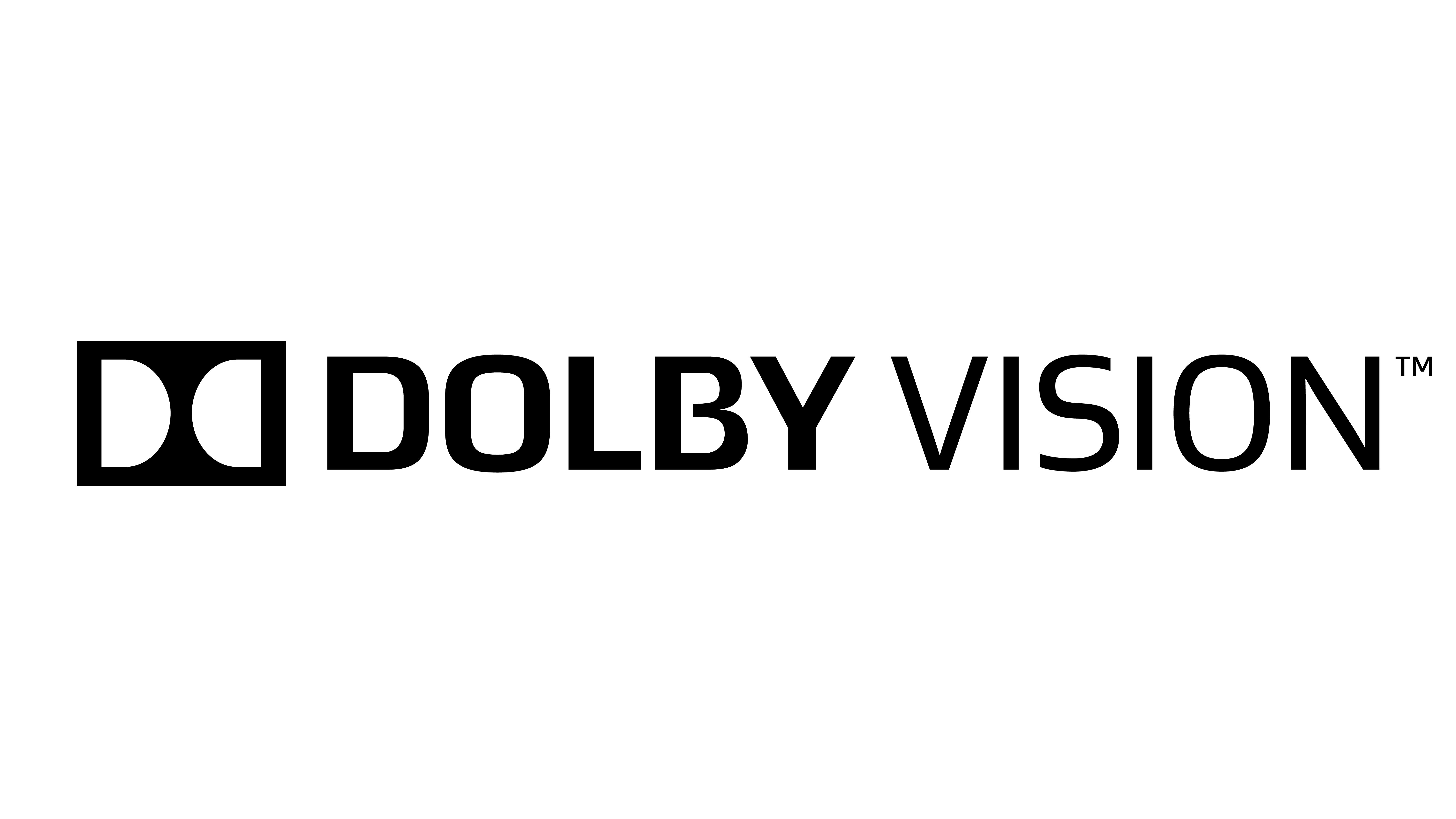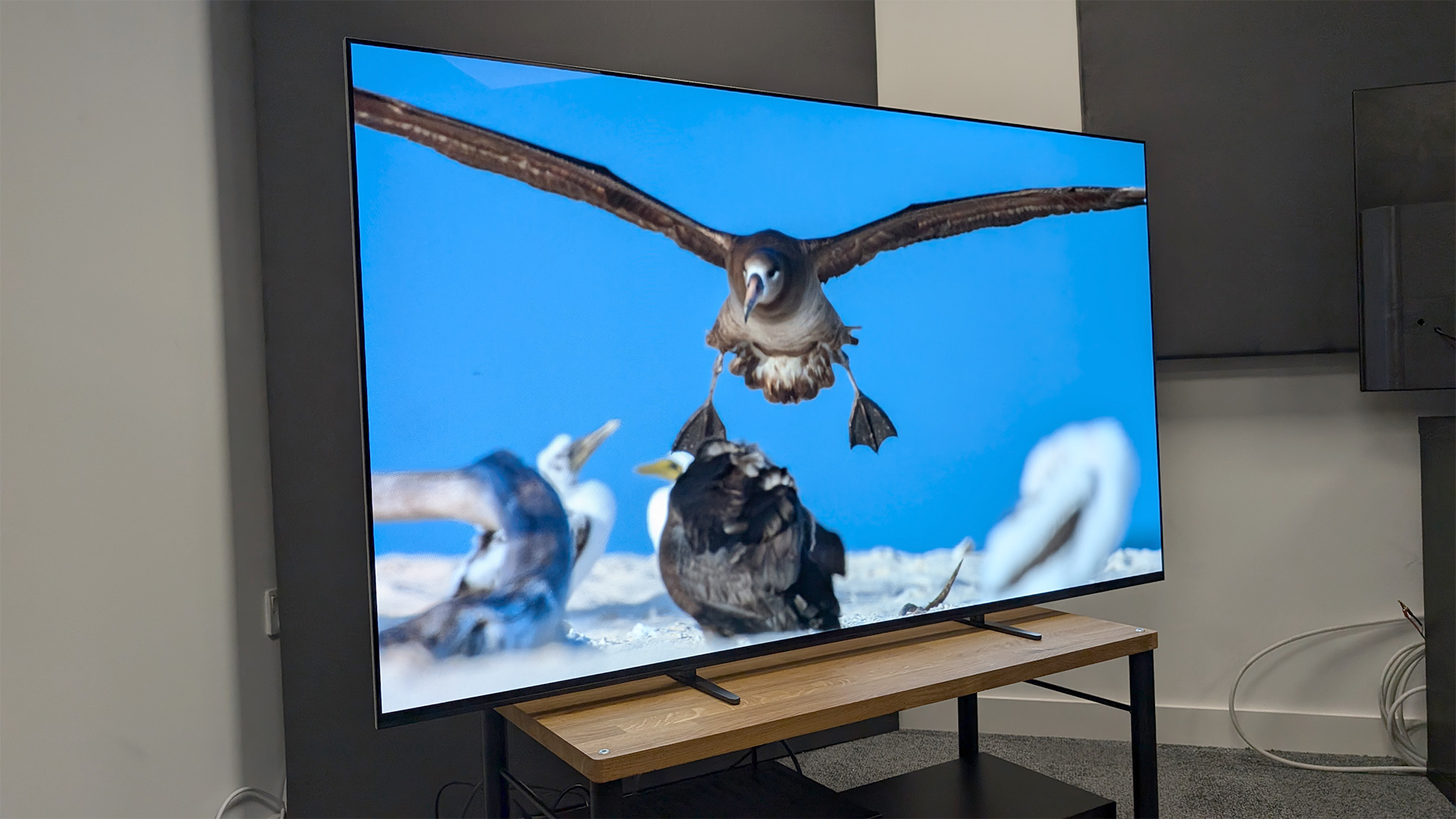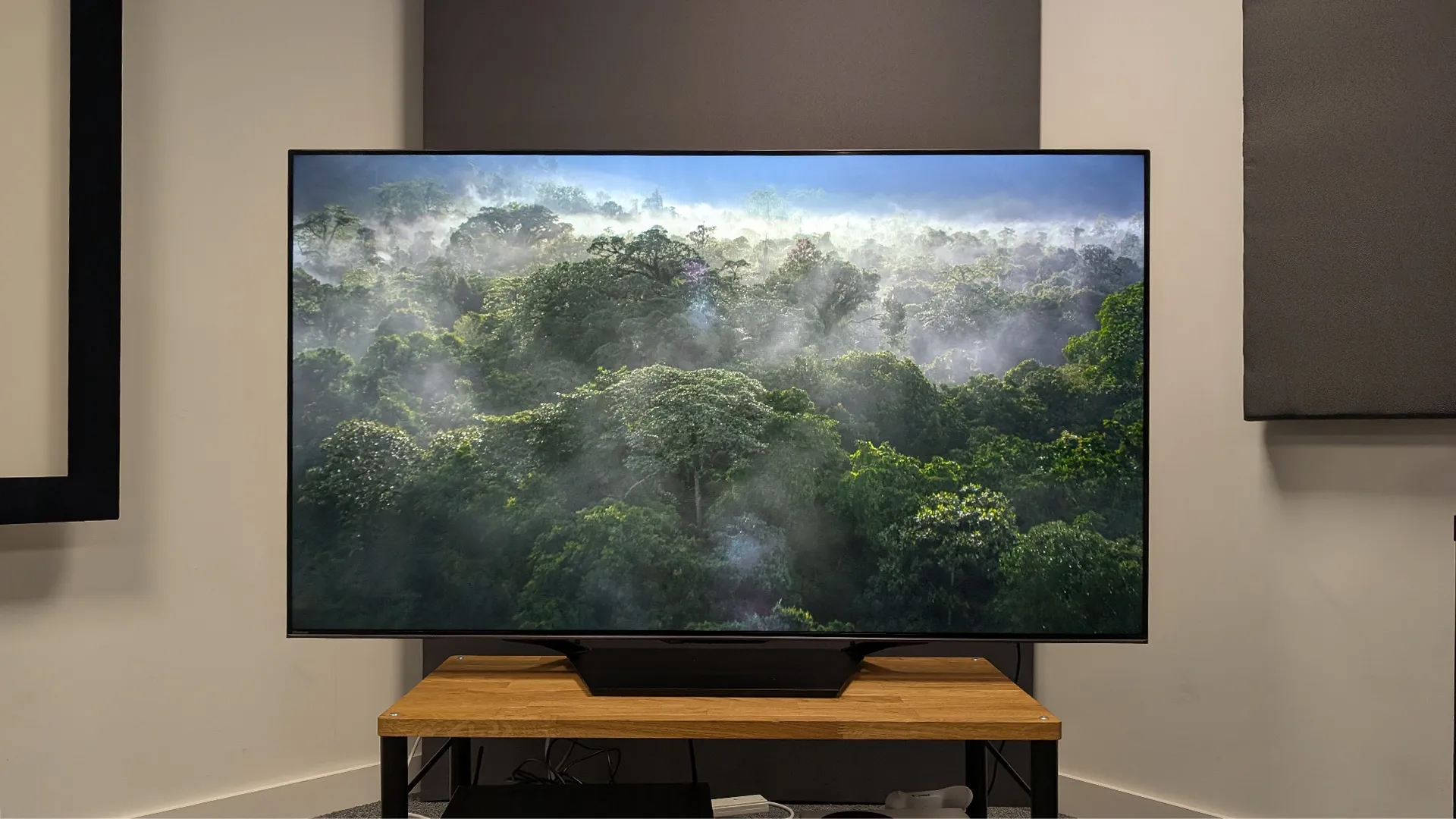Dolby Vision 2 vs Dolby Vision 2 Max: what you need to know about Dolby’s next-gen HDR format
Dolby’s new tech promises to make movies look more authentic than ever – but you’ll need a new TV to see it at its best

Dolby has unveiled Dolby Vision 2, the latest evolution of its premium HDR tech which promises to bring the picture you see at home even closer to what the director intended.
It brings smarter processing, improved tone-mapping, and new tools for filmmakers, along with a higher-end tier called Dolby Vision 2 Max, designed to extract the very best performance from the best TVs.
For anyone less familiar with Dolby Vision itself, it’s one of the most advanced HDR (High Dynamic Range) formats available.
Unlike basic HDR10, which uses a single set of brightness and colour data for an entire film, Dolby Vision employs dynamic metadata – scene-by-scene (or even frame-by-frame) information that tells your TV how to reproduce every shot as accurately as possible.
The result, when done right, is deeper contrast, punchier highlights and more lifelike colour that all get the image closer to the look intended.
Dolby Vision 2 takes this concept further, adding new content-aware intelligence, updated creative tools, and a more-powerful Dolby image engine inside the TV itself. The aim is to make the whole chain – from post-production to playback – more coherent, authentic, and adaptable.
If you’ve only just got to grips with Dolby Vision and its room-aware offshoot, Dolby Vision IQ, you might be wondering what’s actually new, how Vision 2 differs from Vision 2 Max, and whether you will need new hardware.
The latest hi-fi, home cinema and tech news, reviews, buying advice and deals, direct to your inbox.
Here to clear up the confusion – and help you make an informed decision – we have created this handy guide.
What is Dolby Vision 2?

Dolby Vision 2 is an evolution rather than a full reset. On the creative front, Dolby has added tools that analyse images and help colourists, studios, and services generate more nuanced scene-by-scene metadata.
For end users, TVs with the updated Dolby image engine can interpret that data to deliver a picture that tracks the grade more faithfully across different screens and environments.
Dolby is keen to stress that this is not a TV-side “AI picture mode” guessing at fixes. Rather, it’s a creator-guided workflow that begins in the grading suite and travels with the content before being displayed on your TV.
What is Dolby Vision 2 Max?

Dolby Vision 2 Max uses the same content stream as Vision 2, but unlocks a set of additional capabilities on Max-ready displays.
In other words, you can think of it as a fully loaded tier for high-end TVs. It’s here that you will find Dolby’s most eye-catching additions, including an evolved ambient-aware system, creator-guided motion handling, and new tone-mapping logic that can take advantage of flagship-class brightness and colour volume.
What’s the difference between Dolby Vision 2 and Dolby Vision 2 Max?
In short, while the content is identical, the difference is what your TV can do with it. A standard Dolby Vision 2 set applies the core improvements and delivers a more consistent, more authentic HDR presentation.
A Dolby Vision 2 Max set goes further, unlocking the new top-tier features where the hardware allows. An older Dolby Vision TV will still play Vision 2 content perfectly happily, mind – it simply ignores the extra instructions.
Light Sense vs Dolby Vision IQ

If you have seen Dolby Vision IQ listed in your TV’s specification sheet, it isn’t a different HDR format – it’s an extension of Dolby Vision.
First introduced in 2020, Vision IQ sits on top of the standard Dolby Vision framework, using the same dynamic metadata but adding input from the TV’s ambient light sensor.
In practice, it adjusts the picture automatically based on your viewing environment, brightening dark scenes in daylight, toning down glare in dim rooms, and generally saving you from faffing around with switching picture modes manually.
Light Sense, part of the new Dolby Vision 2 platform, takes that same idea and incorporates it directly into Dolby’s latest HDR architecture.
It uses more-advanced ambient-light algorithms, richer scene-by-scene data, and a smarter Dolby image engine to make those adjustments more accurate while preserving the look intended by the filmmaker.
Dolby describes it as a re-imagining of Vision IQ – effectively a next-generation version built into Vision 2 rather than bolted on afterwards.
In practical terms, Light Sense means that a Dolby Vision 2 Max TV can interpret both the content and your surroundings simultaneously, adapting brightness, contrast and colour balance in real time, without flattening the image or skewing colour accuracy.
Over time, as TV makers move across to the new platform, Dolby Vision 2 is expected to replace both the original Dolby Vision and Dolby Vision IQ entirely.
What is bi-directional tone-mapping?
Another tool in Dolby’s arsenal is bi-directional tone mapping.
Every HDR film or show is mastered on a professional reference monitor – typically one that can reach around 1000 to 4000 nits of brightness. That is beyond the capabilities of most TVs, so they have intelligently remapped the brightness and colour range of the original image to fit what the panel can display, while preserving as much highlight and shadow detail as possible.
Until now, this process has been a one-way affair, with the TV taking the mastered signal and scaling it down to suit its own capabilities.
Dolby Vision 2 changes that by adding metadata that allows TVs to map the image both down and up – hence the term bi-directional. This means that a flagship television with higher brightness or colour volume than the mastering display can use its extra headroom to show highlights that are brighter and colours that are richer, without breaking the creative intent of the grading process.
Dolby describes this as an evolution of HDR tone-mapping itself, letting content creators specify exactly how their work should appear on a range of displays, from entry-level sets right up to cutting-edge Mini LED and OLED flagships.
The feature sits within Dolby Vision 2 Max, where it forms part of the suite of advanced tools designed to make the most of top-tier hardware.
What is Authentic Motion?

Judder (aka, jerky, uneven motions) on big, bright screens is a common complaint, and blanket motion-smoothing can leave films looking like unnatural, glossy soap operas.
Authentic Motion is a feature that lets filmmakers flag specific shots – for example, a 24fps pan against a bright background – and define a measured de-judder amount for that specific scene.
A TV with Dolby Vision 2 Max can apply this motion treatment to these flagged moments while leaving other scenes untouched, making for a consistent, smooth viewing experience throughout.
Does Dolby Vision 2 have a reference mode?

Indeed it does, and it’s a key distinction between Dolby Vision 2 and earlier versions of the format.
Regular Dolby Vision doesn’t have a dedicated reference-mode built into the standard itself. Instead, TV makers have historically offered their own approximations – usually a Filmmaker Mode or a Dark Room Dolby Vision preset designed to turn off most picture processing and show content as closely as possible to the original grade.
Dolby Vision 2 formalises this concept with a proper, Dolby-defined Reference Mode. It is aimed at enthusiasts and calibrated environments where the lighting is well controlled, and the goal is absolute accuracy rather than adaptation.
In this mode, the TV disables ambient-light adjustments and most dynamic behaviour from the new Vision 2 processing stack, locking the presentation to match the mastering conditions used in the studio.
By contrast, the more adaptive modes within Dolby Vision 2 – such as those using Light Sense – are designed for everyday viewing, adjusting to room conditions while keeping the look faithful.
The addition of an official Reference Mode gives users a clear choice – the purest, most controlled picture for dark-room film nights, or a more flexible, intelligent image that adapts seamlessly to its surroundings.
Will Dolby Vision 2 work on your TV?
Dolby Vision 2 content is backwards compatible, and your existing Dolby Vision TV can still decode the base layer and dynamic metadata as usual, while ignoring the new Vision 2-specific instructions.
Picture quality won’t degrade, but you won’t see Light Sense, Authentic Motion or bi-directional mapping unless your TV supports Dolby Vision 2 or Vision 2 Max.
With that in mind…
Do you need to buy a new TV for Dolby Vision 2?

Unfortunately for your wallet, yes. If you want the full Dolby Vision 2 experience – and especially Dolby Vision 2 Max – you’ll need a new TV.
Dolby has confirmed that the new system is tied to updated Dolby hardware pipelines, not a simple software patch, which means existing Dolby Vision sets will continue to play Dolby Vision content perfectly well, but will not gain the new Vision 2 features.
It’s all down to the architecture. Dolby Vision 2 relies on a new Dolby image-engine capable of interpreting the expanded metadata and carrying out the more precise tone-mapping, creator-guided motion handling, and ambient-light adaptation.
Vision 2 Max goes further still, requiring more-advanced processing power, a 120Hz panel for Authentic Motion to work cleanly, and a calibrated ambient-light sensor so that Light Sense can adjust the picture intelligently without compromising accuracy.
Put simply, the hardware inside current televisions – even many premium 2024 and 2025 OLED and Mini LED models – was not designed with Vision 2 in mind.
While a small number of very recent models might technically contain compatible chipsets, there is no guarantee that they will receive Vision 2 certification.
The first wave of Dolby Vision 2 sets is expected to arrive with 2026 ranges, beginning with select high-end Mini LED and OLED models, with Vision 2 Max reserved for true flagship tiers.
Older Dolby Vision TVs remain fully compatible with Vision 2 content, but they will play it as standard Dolby Vision. If you want the new HDR behaviour that Dolby is promising – from creator-directed motion to more precise tone-mapping in bright rooms – a new TV will be required.
Which TVs will support Dolby Vision 2?
At the time of writing, only a few TV makers have confirmed plans for Dolby Vision 2, and the rollout will more than likely kick off with new flagship models in 2026.
Hisense is leading the charge, with Dolby officially naming it as the first partner, with upcoming premium Mini LED televisions built around the MediaTek Pentonic 800 chip and its MiraVision Pro picture engine. These are expected to make their debuts in 2026 as the first fully certified Dolby Vision 2 sets.
TCL also appears to be preparing support – a TV carrying a Dolby Vision 2.0 logo was spotted at IFA 2025, while a Philips contact has also confirmed to us that its 2026 line-up will include the format:
"I can only confirm at this stage that Dolby Vision 2 will be included on sets from the Philips 2026 TV range, but I can’t identify which models yet – though I can confirm older sets cannot be updated to include Dolby Vision 2."
Broadly, 2026 will be the first model year to feature Dolby Vision 2, with Dolby Vision 2 Max reserved for the most advanced OLED and Mini LED sets using the latest chipsets and 120 Hz panels. As mentioned, existing Dolby Vision TVs will continue to play Vision 2 content as normal, but won’t gain the new processing or features.
When will Dolby Vision 2 content be available?
For now, Dolby Vision 2 content is still in its early rollout phase. Dolby has, however, confirmed that Canal+ will be the first partner to deliver movies, series and live sport mastered in the new format, making the French broadcaster the launch platform for Vision 2 content.
In practice, we are unlikely to see a steady flow of Dolby Vision 2 content until the first compatible TVs appear in 2026. Once they do, expect streaming platforms to lead the way.
Which is better: Dolby Vision 2 or Dolby Vision 2 Max?

We are yet to put Dolby Vision 2 through its paces in a full, in-depth review, so we’re reserving our judgement until then.
On paper, though, it’s hard not to assume it will be better than standard Dolby Vision, assuming it delivers on its promises. Every TV certified for Dolby Vision 2 should, in theory, benefit from all manner of improvements, including deeper contrast control, cleaner tone-mapping transitions, and fewer visible artefacts when rendering challenging highlights.
Dolby Vision 2 Max brings even more to the table. Bi-directional tone-mapping promises to let a Max-certified TV make use of its full brightness range – both above and below the mastering reference – without skewing colour accuracy. Light Sense will also analyse a room in real time to adapt the picture without washing it out, while Authentic Motion gives filmmakers far tighter control over movement and judder.
With all that said, stay tuned for our full Dolby Vision 2 review, to see if the new format lives up to the on-paper hype.
MORE
We asked Dolby all the big questions about Dolby Vision 2 – and we have good and bad news
Best TV 2025: flagship OLEDs and budget LED sets tried and tested
Our picks of the best Dolby Atmos soundbars

You must confirm your public display name before commenting
Please logout and then login again, you will then be prompted to enter your display name.
